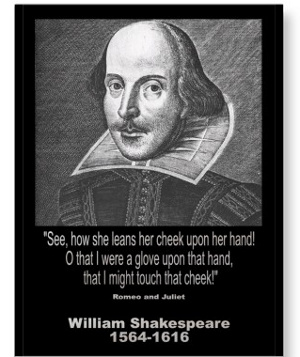Can restore Shakespeare's signature?
The question of who is the owner of the 'Wm Shakespeare' scribbles on the title pages of Archaionomia, published under Queen Elizabeth I's reign is still an unanswered question.

The title page of Archaionomia book
Gregory Heyworth, a professor of language at the University of Mississippi, joined his students to use new technology to restore nearly lost glyphs. This work is part of Project Lazarus, to revive damaged texts using a technique called multispectral imaging. However, Professor Heyworth said that this signature is not a signature of William Shakespeare, it is still not a definite affirmation.

This recovery technique uses up to 12 different wavelengths of light, from ultraviolet rays to infrared rays, to help improve the resolution of images of old documents. Later, scientists will use a software to combine these images into the clearest possible image of text. In this way, they were able to reproduce the documents that were completely erased, the documents were scratched or scorched, or were damaged by water.
Last year, project Lazarus used high-tech photography to discover William Faulker's new poems from a collection that was damaged by fire. This year, Heyworth led a group of students to the Shakespeare Library in Washington to investigate a signature believed to be the Bard's.

The group has not yet begun the process of confirming whether this is Shakespeare's signature, but they have restored it. Heyworth also planned to compare this signature with Shakespeare's other handwriting, including an essay published in 1603.
If it is possible to confirm the signature on the book Archaionomia is that of the playwright, this can provide new insights in the legal approach in his plays.
- Recover Shakespeare's signature
- Science proves: The bigger the signature, the more likely you are to be a leader
- The signatures have '1-0-2' in the world
- Mysterious curse on Shakespeares grave
- Vietnam is going to have a decree on digital signature authentication
- See the signature right away if you are a sufferer
- Auction for the final hand signature of the physical prince Stephen Hawking
- Ministry of Post and Telematics held a workshop of Digital Signature and Digital Authentication
- The best signatures in the history of celebrities
- Change capacity using System Restore on Vista
- The anti-theft initiative is precious
- Implantation in the eyes to restore vision: The first Vietnamese patient underwent surgery
 'Fine laughs' - Scary and painful torture in ancient times
'Fine laughs' - Scary and painful torture in ancient times The sequence of numbers 142857 of the Egyptian pyramids is known as the strangest number in the world - Why?
The sequence of numbers 142857 of the Egyptian pyramids is known as the strangest number in the world - Why? History of the iron
History of the iron What is alum?
What is alum?